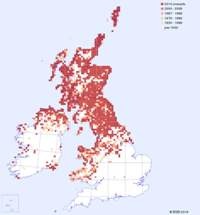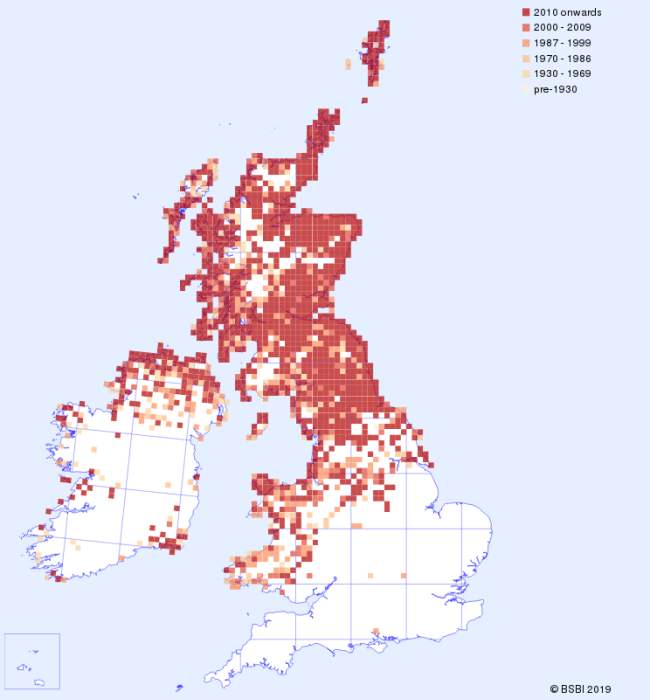As its name suggests, the Northern Marsh-orchid has a predominantly northerly distribution in the UK and Ireland, with its populations in West Wales being at the most southerly part of its range. Apart from the complications caused by hybrids with spotted orchids it is, relative to some Dactylorhiza species, fairly straightforward to identify. The flowers are a deep magenta and have distinctly diamond-shaped lips that are only very slightly tri-lobed. The inflorescence has a flattened top, and the leaves are either unmarked or only sparsely marked with a few spots. The exception to this is the subspecies which occurs in Wales, Dactylorhiza purpurella subsp. cambrensis, which has numerous dark spots on the leaves. Northern Marsh-orchid grows in a number of mainly alkaline habitats, although it is also able to tolerate mild acidity. Good places to look for this orchid are marshy fields, roadside verges, fens, marshes and sand-dune slacks that remain damp throughout the year. Occasionally, Northern Marsh-orchid will colonise drier places such as old waste tips and abandoned quarries. Dactylorhiza purpurella flowers from late-May to mid-July. This European endemic plant is also found in northwesterly parts of Norway, Sweden and Denmark.
| Distribution Map | Key Features | |
 |
Records for the Northern Marsh-orchid from BSBI are shown on the map with most recent in front. (Hover the mouse over the small map to expand it.) |
Plant: 5 to 45cm tall; stem green flushed pink to purple towards the top, robust, ribbed and hollow. |
Image Gallery for Northern Marsh-orchid Dactylorhiza purpurella
| Pollination | Taxonomy & Hybrids |
Little detailed information is available, but Northern Marsh-orchid is known to be pollinated by bees. Seed set is good. |
The specific name 'purpurella' means 'purple'. |
Articles about Northern Marsh-orchid in JHOS
